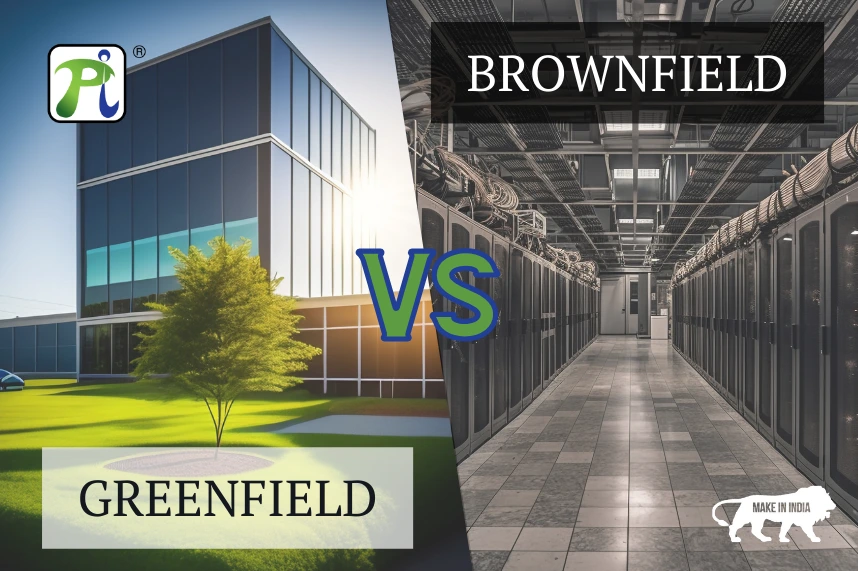We Will Get Back To You As Soon As Possible


In the dynamic world of data management and technological innovation, the establishment and expansion of data centers have transcended the conventional boundaries of construction. Embarking on this journey unveils two distinct methodologies: Greenfield and Brownfield Datacenters, each representing a unique approach towards creating the backbone of our digital infrastructure. As organizations navigate the intricate landscape of data center development, understanding the nuanced intricacies of these two paths becomes imperative.
In this exploration, we venture beyond the commonplace narratives, peeling back the layers to reveal the profound impact and strategic considerations associated with Greenfield and Brownfield initiatives. This is not merely a discussion on the foundations of data centers; it's an expedition into the evolution of digital architecture, where each decision echoes through the corridors of technology, shaping the landscape for years to come.
A Greenfield Datacenter refers to new, ground-up construction that involves building a facility from scratch. These projects typically commence on an untouched site, providing a blank canvas for architects and engineers to design and implement state-of-the-art infrastructure. Greenfield initiatives offer unparalleled flexibility in terms of layout, technology integration, and scalability.
The cornerstone of Greenfield brilliance lies in the ability to create bespoke solutions tailored to the unique needs of an organization. This level of customization ensures that every facet of the data center aligns seamlessly with operational requirements. From the layout to the incorporation of innovative technologies, Greenfield projects empower enterprises to set new benchmarks for efficiency and innovation.
In the ever-evolving digital landscape, scalability is not merely an advantage but a necessity. Greenfield Datacenters, unburdened by pre-existing constraints, present an environment where expansion is not just a consideration but an inherent feature. Organizations can scale their operations effortlessly, ensuring resources are optimally utilized without compromise.
Greenfield initiatives are not bound by the legacies of the past; they are an opportunity to embrace the future. By integrating state-of-the-art technologies right from inception, organizations can position themselves as pioneers in the tech landscape. This commitment to innovation ensures a competitive edge that resonates far beyond the initial stages of development.
In contrast, Brownfield Datacenters involve the expansion or retrofitting of existing facilities. This approach is akin to renovating an existing structure to meet the demands of modern data center requirements. Brownfield projects often leverage existing infrastructure, which can be both a strength and a constraint.
Brownfield projects can be more cost-effective than Greenfield, as they repurpose existing structures. This can result in significant savings, especially when the existing facility aligns with the organization's needs.
Leveraging existing infrastructure allows for quicker deployment compared to Greenfield projects. Brownfield initiatives are well-suited for organizations requiring a swift response to growing data demands.

Repurposing existing structures can contribute to sustainability goals by reducing the need for new construction and minimizing environmental impact.
In the realm of data center development, the tempo at which projects come to life plays a crucial role. Greenfield projects, comparable to the undertaking of a symphony from its inception, demand meticulous planning and execution, inevitably leading to a longer construction time. The creation of entirely new infrastructure involves a range of architectural designs, engineering precision, and careful implementation, all of which contribute to a longer gestation period.
The Brownfield strategy, conversely, incorporates a pragmatic aspect into the overall composition. Brownfield initiatives can be expedited by capitalizing on pre-existing structures. Reducing the time required for the data center to become operational.
The financial overture of data center projects unfolds with distinct notes for Greenfield and Brownfield endeavors. Greenfield projects often incur higher initial costs. This investment, however, is a forward-looking endeavor, paving the way for revolutionary infrastructure and technology.
On the other hand, the Brownfield approach harmonizes with a different financial caliber. Repurposing existing structures can yield cost advantages. Organizations opting for Brownfield initiatives leverage the past, utilizing existing structures as a cost-efficient foundation for their data centers, a strategic move that can be a breath of fresh air for decision-makers.
In the world of Greenfield projects, architecting a unique project that echoes the organization's distinct needs and aspirations. Greenfield initiatives are a canvas waiting to be painted, offering unparalleled customization where every brick is a deliberate choice.
In contrast, Brownfield projects embrace the art of adaptation. It's a process of harmonizing with the existing architectural structures and adapting them to meet modern data center standards. This adaptation showcases the organization's ability to blend tradition with innovation, creating a data center composition that respects the past while embracing the future.
Whether opting for the strategic flexibility of a Greenfield Datacenter or the cost-effective adaptability of a Brownfield approach, organizations must carefully weigh the pros and cons based on their specific needs. The decision between Greenfield and Brownfield is a crucial step in shaping the future of data infrastructure, influencing factors such as cost, speed of deployment, and long-term scalability. In navigating this decision, enterprises can chart a course towards a robust and efficient data center strategy that aligns seamlessly with their business objectives.
Questions? We're here to help.
©2025 Pi DATACENTERS® Pvt. Ltd. All rights reserved
